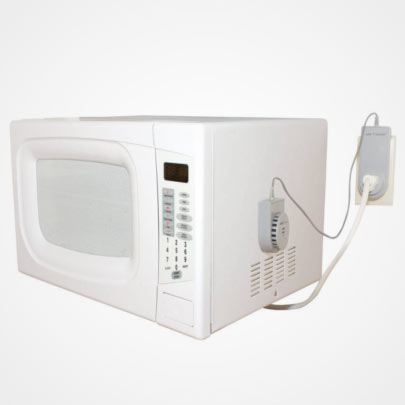Safety devices in residence halls bring reduction in false alarms
The Office of Environmental Health & Safety (EHS) is reporting a significant reduction in false fire alarms in residence halls at SUNY New Paltz, following the installation of new sensors that interrupt power to microwaves at the first sign of smoke.
The success of this program is a major victory for EHS, as preventable false alarms disrupt residence life on campus and strain the resources of College and Village of New Paltz emergency responders.
The installation of microwave sensors began as a pilot program at Bevier Hall in 2014, said Scott Schulte, associate director and emergency manager for EHS.
“We had noticed that a majority of preventable fire alarms are microwave related, people burning their popcorn and whatnot,” Schulte said. “We began installing these safety sensors, which essentially shunt trip power to the unit when they detect smoke, before a fire occurs. The pilot program prevented 100% of the preventable alarms in Bevier, so we expanded the program to all residence halls.”
With the reduction in false alarms now demonstrated in all residence halls, EHS has made plans to establish sensors in all other buildings on campus by the end of 2017.
EHS has also worked with Campus Auxiliary Services to ensure that the combination microwave/refrigerators that are available for students to rent for their on-campus residences include the smoke detecting sensors.
An additional benefit of EHS’s review of campus microwave safety has been the discovery of redundant units in some spaces on campus, where multiple microwaves are located in such close proximity to one another that one would suffice to serve students, faculty and staff in those areas. Schulte said removing redundant microwaves will help reduce the College’s overall energy consumption without significantly affecting the quality of the campus work environment.
More information about Environmental Health & Safety at SUNY New Paltz is available online.

